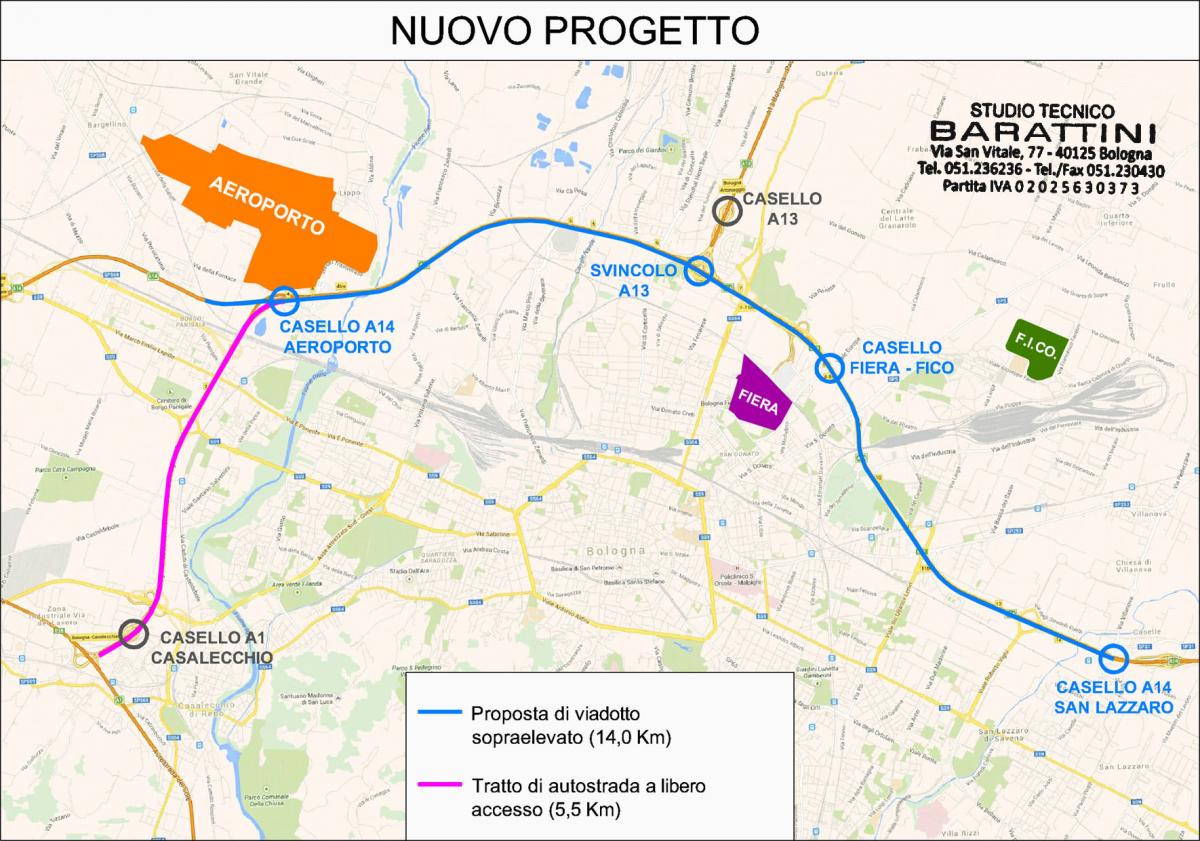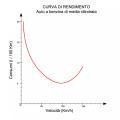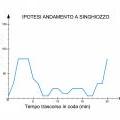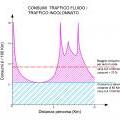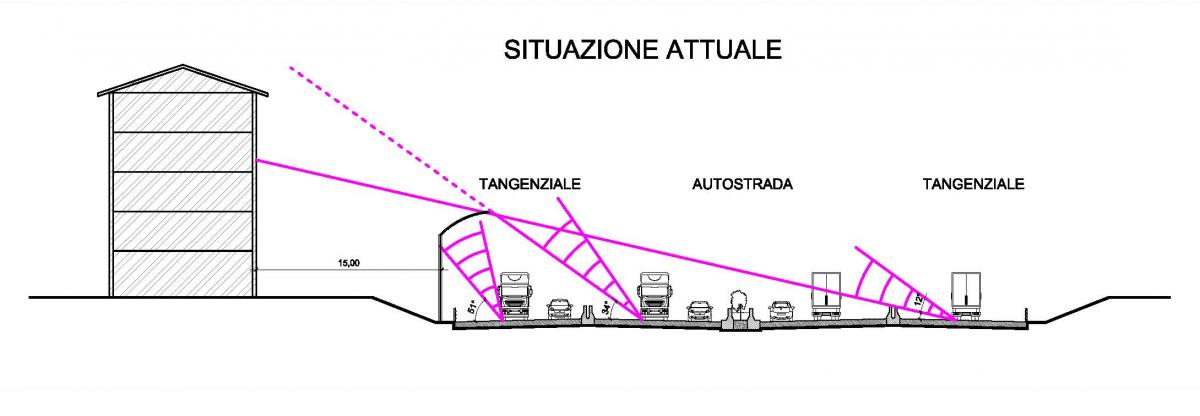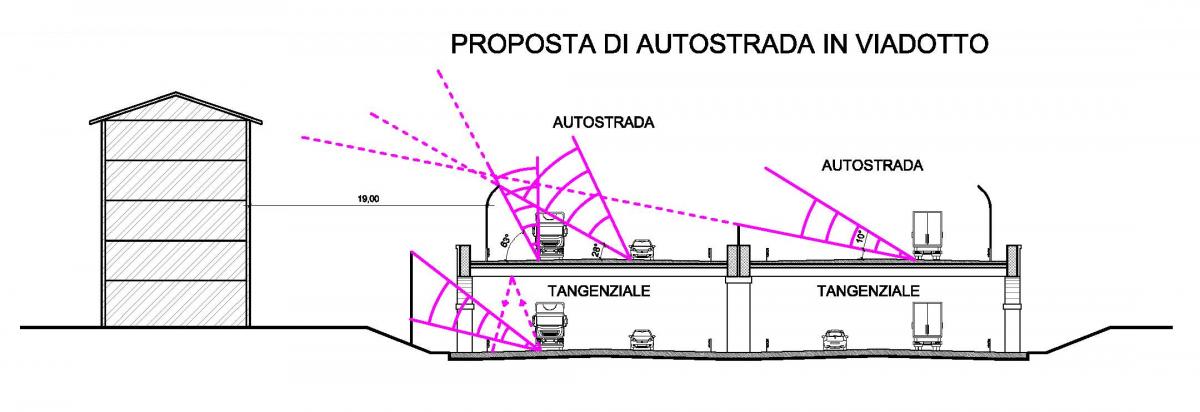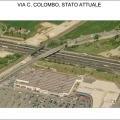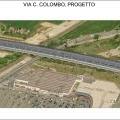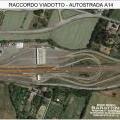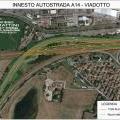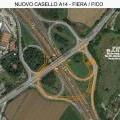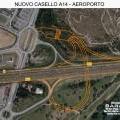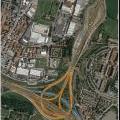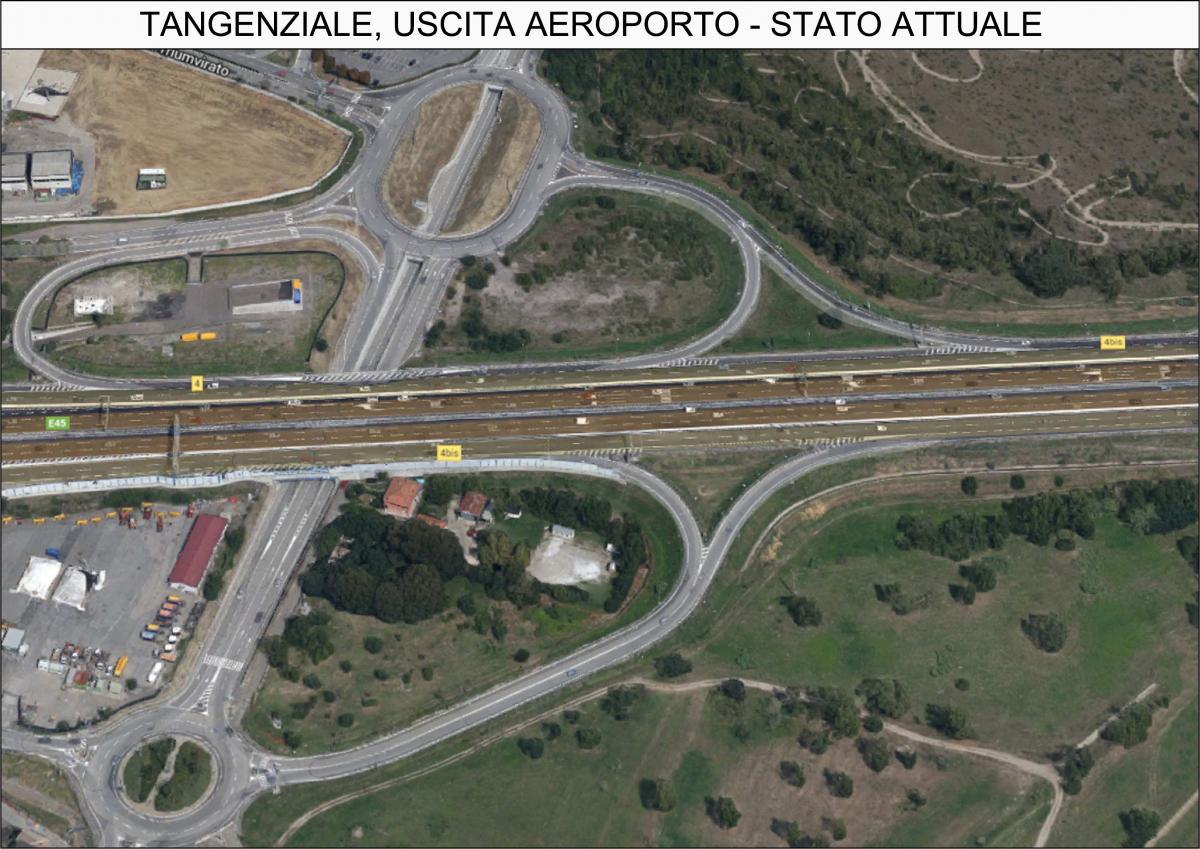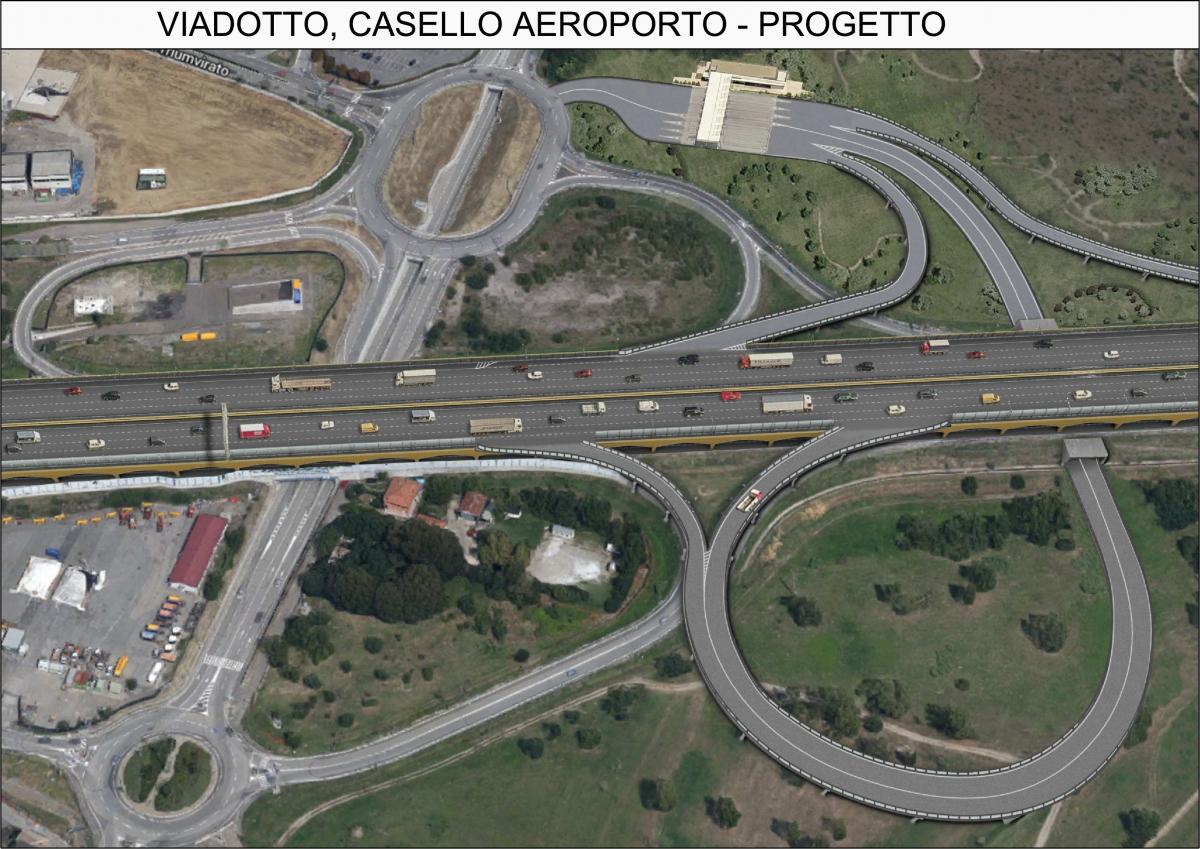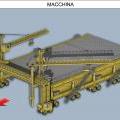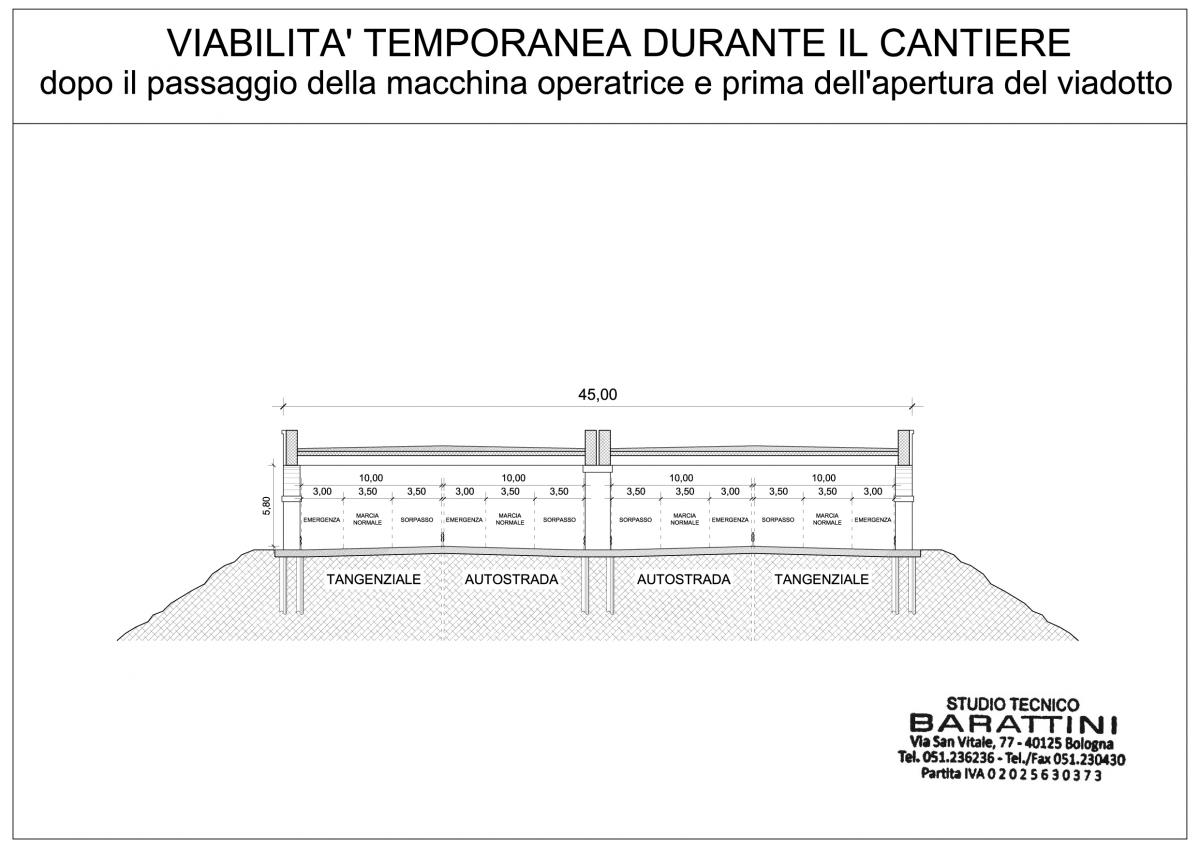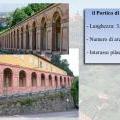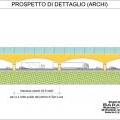
Alternative proposal to the motorway bypass of Bologna
(work to be carried out without interruption of traffic)
The current situation
The road network of the city of Bologna is essentially based on two main routes: the ring that closes the historical center, separating it from the different suburbs, and the ring road that enables the crossing from east to west with a path to semi-ring that spread north of the city: from here are intersected the different radial streets of connection with the viability of the lowland.
By the development of the towns that are part of the metropolitan area, as well as by the realization of industrial and commercial areas, the ring road has become increasingly essential in the time and, basically, the only efficient connection for the extra-urban mobility.
The observations and the resulting statistics compiled over the years have come to prove that the traffic of the ring road is near collapse: the queues and the continuous delays are the direct result of an excessive number of users on a surface become too small.
Things are not going better in the motorway path that is content between the two branches of the ring road: the incoming lanes from Modena are four , while those in the exit towards Rimini are three. In the path between Borgo Panigale and San Lazzaro, as noted, the motorway axis is reduced to two lanes in each direction (recently supplemented by a third, dynamic, who took the place of the emergency one) therefore with much lower flow rate than the entering streets.
The official proposals submitted to date
It has been discussed and designed, for at least 15 years, an infrastructure defined as “of great strategic importance”, called "North motorway bypass of Bologna", which proposed the creation of a motorway, with two lane in each direction, a lot north of the city of Bologna, passing through ten municipalities.
The planned bypass would have had a route of about 40 km connecting Lavino (western suburbs) to Ozzano (eastern suburbs).
The critical issues widely acclaimed were represented by:
- substantial increase in the path (increase of fuel consumption, worsening of pollution)
- loss of land (with high geological and geotechnical risk)
- many interferences with existing peripheral roads
- limited benefits to municipalities crossed
- no benefit to traffic on the ring road
- no improvements to traffic on the motorway
Below is the outline of the above described project, subject of numerous controversies and heavy criticism , which would require ten years of work with an estimated cost of 1.3 billion euro.
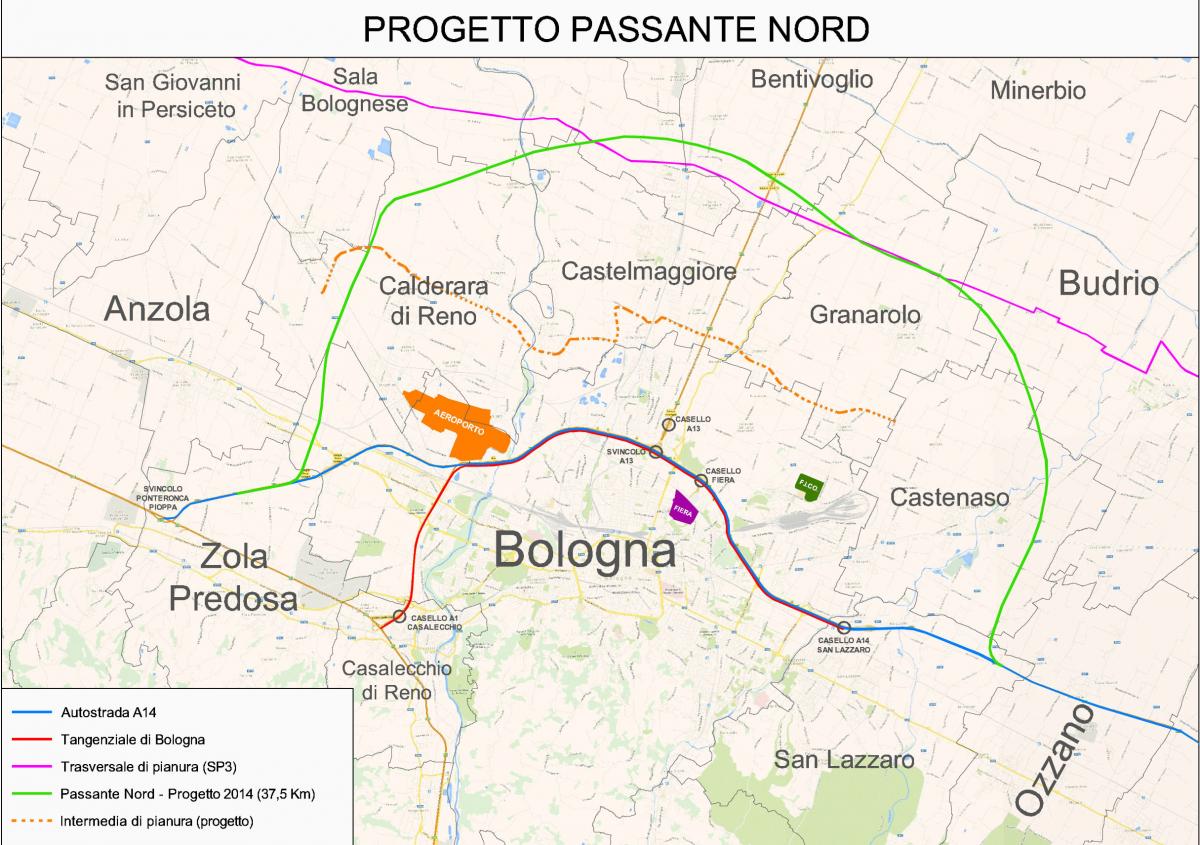
After countless more or less important variations on the path, approvals, changes of mind and, most of all, the protests of the municipalities involved and the numerous Committees Citizens, the Northern Bypass project was abandoned for obvious inconsistencies and technical anachronisms.
In the month of April 2016 it was launched on the table a new proposal , called "Passante di Mezzo" who marries partially some assumptions made over the years to the abandonment of the path so peripheral route described above. The project presented in the Metropolitan Conference April 18, 2016 provides for the enlargement of the road formed by motorway and ring road increasing from two to three lanes for each axle: three lanes plus emergency one in each direction for the motorway in the center of the roadbed and three lanes plus emergency one for each direction of the ring road.
Effectively bringing the entire width of the road from the current 47,4 m to 60,4 m, but actually, considering the installation of noise barriers, the entire width occupied will become of 65,6 m.
The extension will be equal to 18,2 m, and this for about 13 km, along a path where this infrastructure runs through the outskirts of the city, often surrounded by buildings.

Image taken from the site of the Metropolitan City of Bologna
The unresolved critical issues
The crisis of the road system, as first consequence, produces delays, queues and blocks; consequently is detectable an acute surge in the production of pollutants of any species that heavily alter the environmental conditions in areas closest to the roadway.
It's well known that regular and sliding traffic conditions allow vehicles to reduce fuel consumption with consequent reduction in the production of pollutants.
Wider streets, therefore, may allow, for the same number of cars in motion, a net improvement of the current situation, decreasing emissions.
In enlargement projects, including the latest just presented by the City of Bologna it is not expected, nor can be done, any of pollutant reduction system that, even if to a limited extent in view of road expansions, for sure continue to be produced.
The reduction of pollutants is not only achieved by planting shrubs, still to be encouraged, but also with measured and appropriate technical systems that are actually able to eliminate much of the combustion products generated by moving vehicles.
The surveys operated on the ring road of Bologna have identified several areas where the saturation index is near to 90%: this figure is to mean that it is physically impossible that is not generated queues and slowdowns, and, accordingly, will raise the likelihood of accidents and obviously the production of environmental pollution until to critical levels.
The saturation index is represented by the ratio between the flow rate of a road in terms of vehicles and the maximum theoretical capacity.
Among the index values between 70 and 100%, the network is defined congested.
From a technical perspective, the increase to three lanes in each direction is not sufficient, according to the calculations the saturation index would exceed the 70%, overcoming the situation of "slow network" and then with a modest impact on the prospects of traffic flows.
In this case the reduction of pollutants would be equal to 25% of peak, with an average of 12.5%.
Same time it is advisable to also rate the forecasts for the immediate future related to the need for mobility, in terms of numbers.
A particularly important element is then that the path of ring road and highway is now surrounded by built-up areas, an enlargement like the one now proposed involves demolition of buildings, overshooting of the minimum distances from the buildings laid down by regulations and laws, expropriation of building land or with the required features for the building rights in the near future.
The elaborated project hypothesis has as main objective the improvement of the road conditions, but it is not limited to the reduction of pollutants by simply streamlining traffic.
Environmental sustainability is also ensured by another series of technical measures for real environmental mitigation.
This design studio has developed a preliminary design, alternative to those (from 2003 to the present day) so far proposed, which meets the decisive and fundamental problems related to traffic, pollution and feasibility.
The many advantages of doubling the area of present road sediment, an alternative to any other case, through the realization of the viaduct can be briefly summarized by arguing the criteria by which we come to this solution.
The project of the new roadway
Following a careful planning examination and taking into account the needs of the current and forecast traffic, were developed several preliminary solutions, it was therefore concluded that it is necessary the expansion of the ring road and motorway to four lanes.
It has been planned to build a highway route through the city with 4 lanes for both directions; contextually also the ring road, for its entire development, is brought to 4 lanes for both directions.
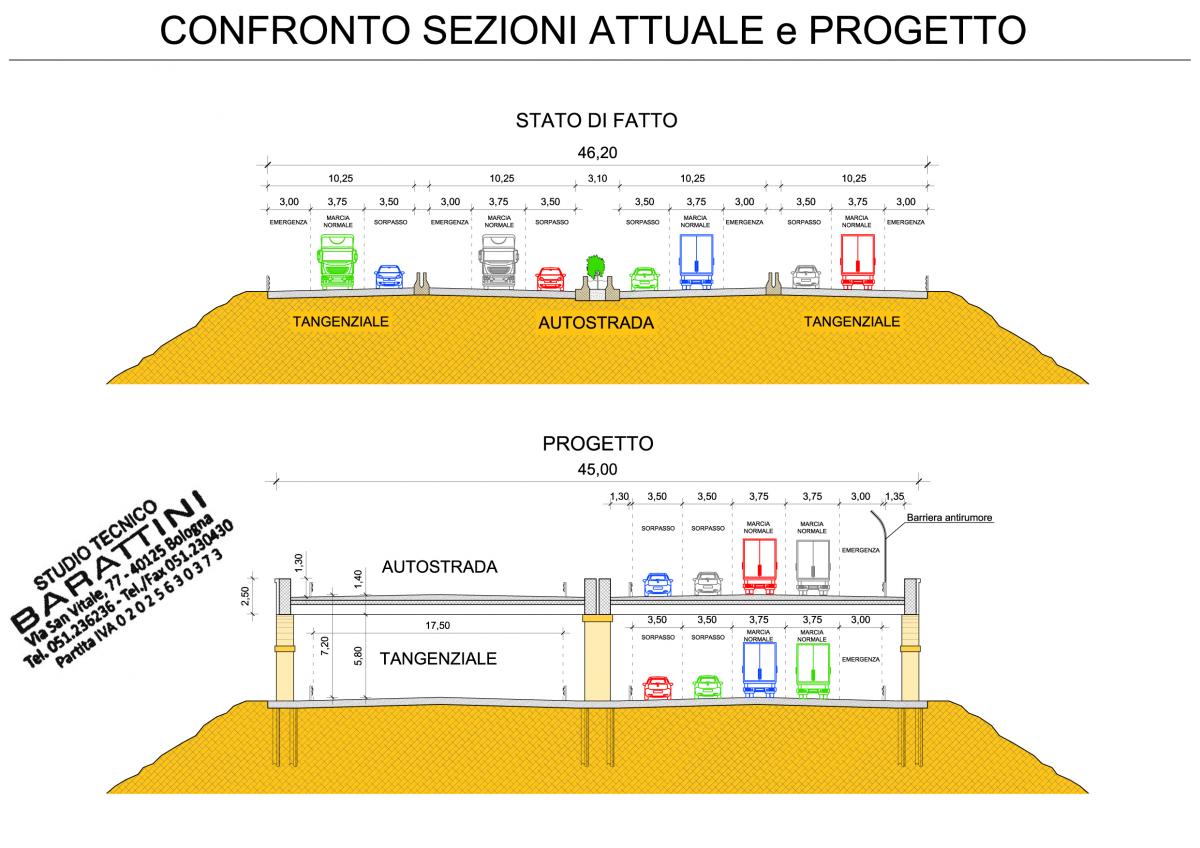
As known to all users of that freeway, its dimensions are clearly insufficient and the constant density of traffic produces continuous tailbacks with devastating effects.
As known to all users of that freeway, its dimensions are clearly insufficient and the constant density of traffic produces continuous tailbacks with devastating effects. The consequences of this situation are detrimental to three fundamental aspects:
- firstly in order to millions of working hours lost annually (with direct serious consequences on the economy of the country);
- again as direct costs on the user for the fuel consumption significantly increased;
- in terms of environmental pollution, since as is known a motor vehicle, while it's queued, it produces pollutants in an amount corresponding to its fuel consumption.
It's well known that the production of pollutants by the internal combustion engine is substantially unavoidable, but it’s true that over time the emissions have been reduced in quantity and attenuated in danger by improving fuels (remember the elimination of lead in gasoline) and the chemical-physical correction of exhaust products, remain however problems related to environmental health.
It’s also known that the heat engine has significantly different characteristics of emissions depending on the conditions of its operation: an engine working at constant speed, committed to 1/3 of its power, reaches performance of extraordinary consumption and, as a direct result, even small emissions.
A car in the chaotic traffic of the city consumes 11 liters of fuel per 100 km, at a constant speed of 90 km/h the same car consumes only 5,4 liters to cover the same distance, saving roughly 50% of fuel are produced contextually 50% less pollutants.
These considerations show that the ideal condition for halving the environmental pollution, directly produced by vehicles moving with no order, is to count on a more regular and smooth traffic as possible without queues, stops and starts, and speed as constant as possible between 80 and 90 km/h.
Obviously everything in theoretical terms: it is physically impossible to obtain a smooth and steady flow of vehicles at speeds always included within the limits above.
To achieve acceptable conditions of viability, and thus reach the result of fluid and regular traffic, it is necessary to get off the saturation index to values included between 20 and 40%.
The solution is represented by the construction of four lanes in each direction: in this way is guaranteed the desired result: a pollutant reduction of 50% (peak) with respect to current events, corresponding to an average 39%, easily reachable.
click on the images to enlarge
In conclusion, the doubling of road obtainable with the viaduct automatically produces the solution to the three issues outlined above:
- reduced travel time;
- reducing consumption for elimination of queues and reduction of paths;
- resulting reduction of environmental pollution;
The technical solutions to further reduce environmental pollution
The environmental pollution caused by combustion engines, as seen, can be reduced with measures that can be taken by traffic management (elimination of queues, speed limitation, regularity outbound to the ordinary roads, etc.) but cannot be completely eliminated.
The only possible and effective systems for the abatement of gases and harmful dust in the air are represented by the presence of surfaces treated with photocatalytic products (for gases) and mechanical (for powders) proceeding to the washing of the road surfaces with regularity.
In the project presented here is planned to provide the outer surface of the viaduct, naturally besides the new elevated road surface destined to the motorway, with permanent photocatalytic additives totaling 800.000 square meters.
The use of these additives, both in the cement surfaces that will form the body of the viaduct, both in the bituminous conglomerate which constitutes the pavement layer, allows the overt reduction, more than 30%, of toxic gases such as:
- inorganic compounds (NOx, SOx, CO, NH3, CH3S, H2S),
- chlorinated organic compounds, dioxins; chlorobenzene, chlorophenol,
- organic compounds (CH3OH; C2H5OH; CH3COOH; CH4; C2H6; C3H8; C2H4; C3H6; C6H6), phenol, toluene, ethylbenzene, etc.
Instead the most effective method of removal of fine dust and particulates in the air is represented by the methodical washing of road surfaces, of course, it is required after long periods of absence of rain.
In the viaduct structure it is simple to equip the area destined to the ring road of a washing system that uses the raw water supply from one or more of the canalization networks for agriculture distributed throughout the territory.
Therefore the combination of fluidification of the traffic, presence of photocatalytic systems and methodical washing of the road surfaces will lead to a significant percentage of improvement in the environmental conditions of all the areas overlooking the new viaduct.
By calculation, using the project elaborated with four lanes both for ring road and for motorway, it is estimated a total reduction of at least 59% of pollution than current conditions.
It is noted that this project is the only one among those proposed which takes into account the enormous problem represented by pollution generated by vehicular traffic and provides a significant reduction.
The technical solutions to reduce noise pollution
Currently the ring road and the motorway obviously represent a noise source that is controlled by huge acoustic barriers.
Nonetheless, at the highest levels of the buildings next to the roadbed, the noise disturbance is clearly perceptible.
Following a diagram of acoustic diffusion clarifies the origin of the problem.
Making the motorway floor at a higher level than that in which now is located, at the same time reducing its width and moving it away from the buildings, will produce a clear improvement as regards the propagation of noise generated by the passage of vehicles as shown in the following comparison scheme.
The acoustic waves will propagate with different and wider angles downloading their energy primarily upward and not affecting any more the buildings until the distance of about 1,2 km.
Conversely the new ring road designed, which will be fully covered and will not be affected by the conditions of rain or snow, will have a noise abatement system obtained by the sound absorbing treatment on the surface of the prefabricated panels for floor and pillars.
The enlargement project, bringing the complex of the lanes to 16 (12 plus 4 emergency lanes), will give rise to sound sources clearly more widespread putting at risk the effectiveness of the proposable acoustic barriers.
The advantages of the elevated street
The route planned for the new motorway is made entirely on viaduct, above the current ring road, it slavishly follows the path from east to west; The road section, now occupied by both motorway and ring road, will be dedicated exclusively to the latter. The new highway will be only above on land already publicly owned.
With this solution will not be required any removal of all bridges and crossings that now exist and that would imply inevitable, and prolonged, interruptions of traffic for vehicles and trains.
Any enlargement of the complex motorway-ring road cannot ignore the logistical issues that the development of the area of the metropolitan city has, over time, altered.
It's clear the impossibility of equipping the motorway of different outputs from those existing (as better explained in the following paragraph) as well as difficult as would be the creation of ramps different from those, now present, of input and output from the ring road; once you enlarged this, must be reshaped and reconstructed also the ramps at the expense of neighboring.
Predict demolitions and expropriations along (presumably at least) 26 Km of road will involve battles, costs and certainly huge delays in every hypothesis of the widening of the infrastructure.
Enlargement is already being little feasible with three lanes in each direction and even unreasonable if considering the achievement of the four lanes.
No one is able to evaluate such discomfort beforehand: individuals, businesses, secondary roads will be distorted by the new highway that will offer only a compensation often not commensurate with the actual damage, which surely will result in hundreds appeals. Entire communities will suffer a permanent reversal and without any financial return.
Behind every expropriation of this size there are years of battles with the Regional Administrative Court, the Courts until the Supreme Court, with costs not always sustainable by the most vulnerable. The disputes will last years and will saturate the Administrations, representing ultimately a monstrous cost for the entire community.
In the alternative proposal of the viaduct this problem it is to be excluded since the area occupied is already owned by the public.
It should be noted that any enlargements of the existing path (which now includes the motorway and the freeway) involve expropriation, for example, on building areas, and violation of the distances from buildings already built, prescribed by law and absolutely unbreakable.
Also relevant to note that this project, by providing a vertical expansion of a public road, in terms of the administrative procedure greatly simplifies the authorization process, making it particularly fast.
The new highway
As we know now the motorway traffic shows two huge deficiencies.
The first limit is its size that provides only two lanes in each direction plus the emergency lane now transformed into dynamic one.
The second disastrous limitation is the position: flanked on both sides by the ring road has no chance neither to be enlarged (though not at the expense of the road) nor to be "updated" building new exits.
Now to get to the airport Marconi, an airport with a relevant number of flights, there is not a dedicated exit.
Same thing for the future food park, FICO, which is now connected to the motorway by a gymkhana, consisting in 11 traffic lights, especially complex, u turns, intersections, roundabouts, etc.
By the viaduct all these difficulties are overcome automatically making possible the realization of motorway exits ad hoc (for example that of the airport) vice versa impossible to achieve if the motorway route remains at the center of this infrastructure, insulated on both sides by the ring road, creating ramps over the ground of public property, without exceeding the distance prescribed by law for existing buildings or future ones.
click on the images to enlarge
click on the images to enlarge
Click on the image to enlarge
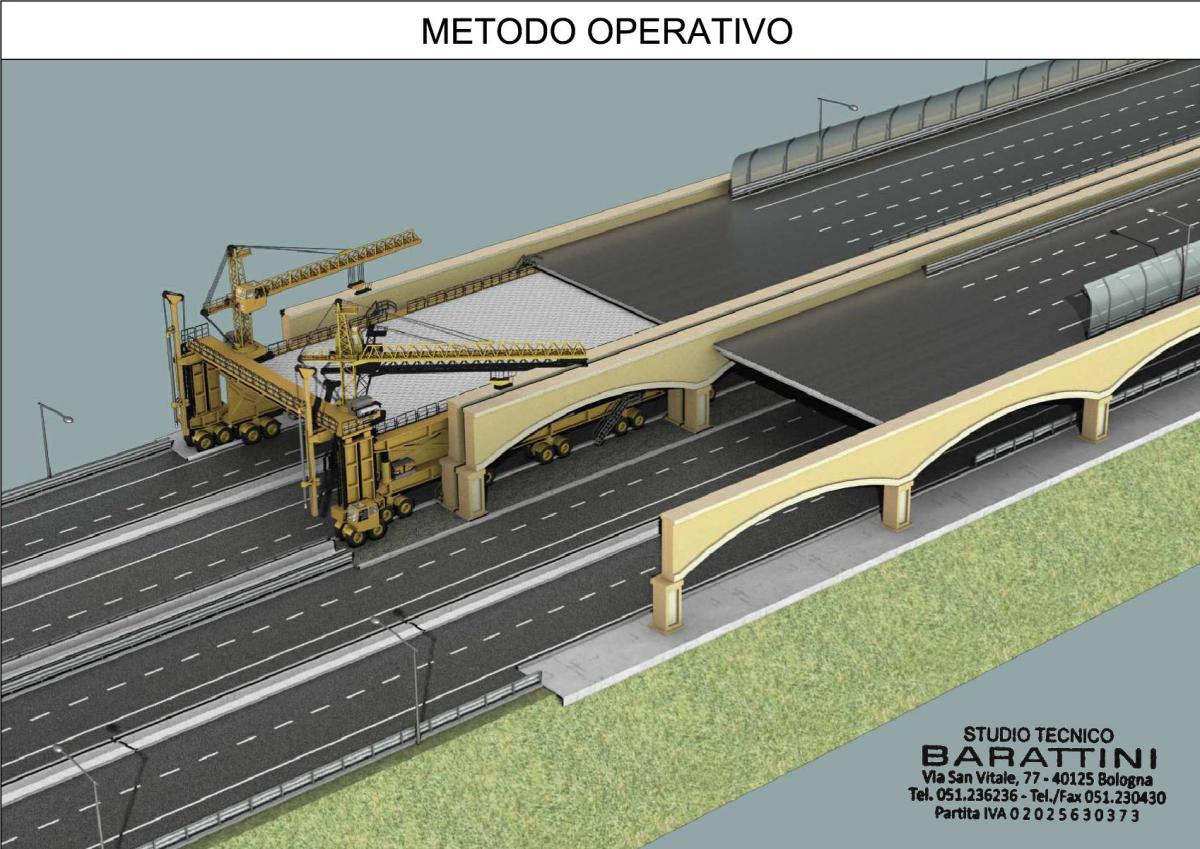
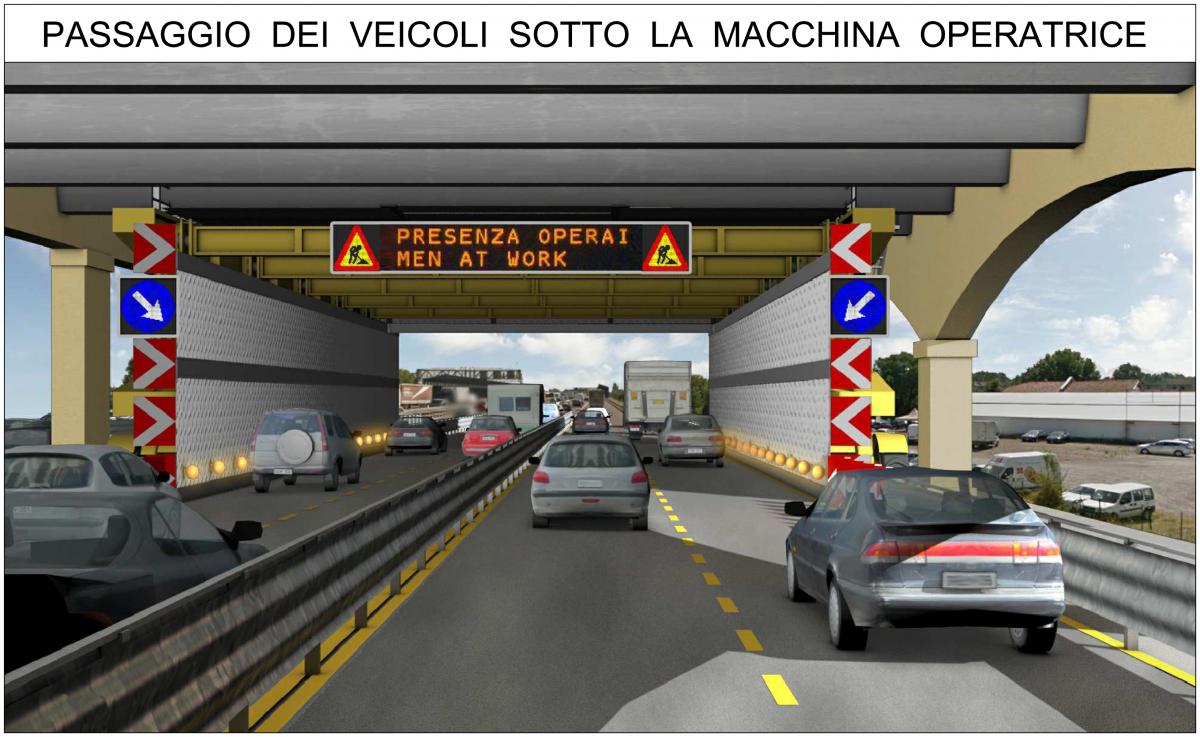
For further details see: The Overbuild machine; Structural feasibility; Safety and Automation
The design
Bologna is famous everywhere for being the city with the most kilometers of arcades in the world and the most representative symbol of this architectural element is the portico that leads to the Sanctuary of the Madonna di San Luca.
click on the image to enlarge
The planned viaduct could resume the aesthetics of portico with arches, columns and details.
By a preliminary analysis of the structure that will support the viaduct has been calculated a wheelbase of the pillars of between 20 and 28 m.
Whereas the portico of San Luca is 3,796 km long and consists of 666 arches, one gets an average width for each arch of 5.7 m, using a space between the pillars of the viaduct of 22.8 m, this measure would be exactly four times that of the arches of the portico.
Interestingly, the viaduct, the length of which would be equal to 15,185 m, would have exactly the same number of arches of the famous ancestor.
click on the image to enlarge
In addition to size you could reproduce the colors and decorative elements that characterize the portico of San Luca. The viaduct would thus become a sign immediately identifiable and recognizable for who, along the highway, will reach Bologna.
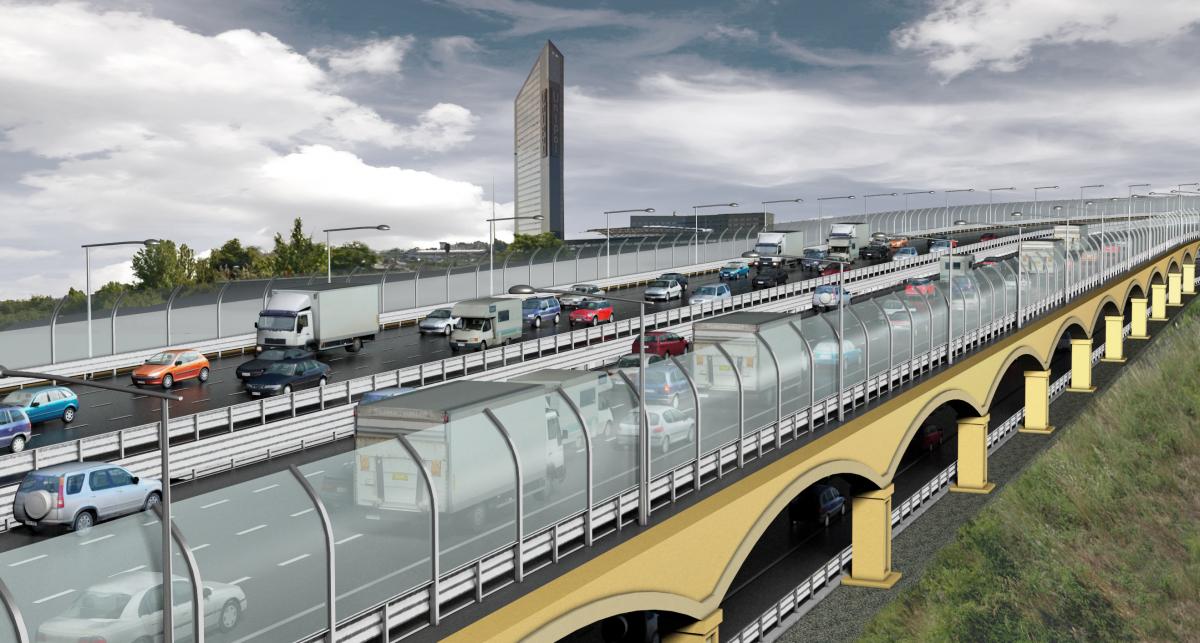
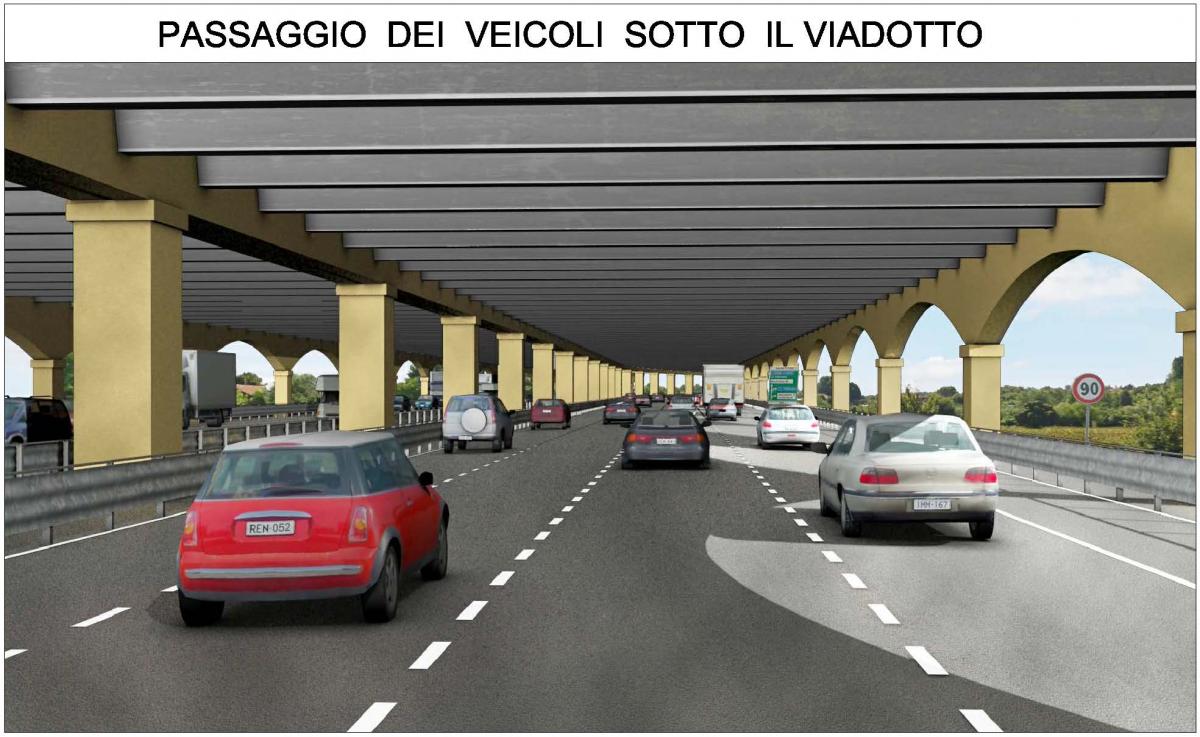
Revive the architecture of the portico applying it to a work of such importance to the city would create a mark on the area that links the past and the future ideally, an intervention made by the city for the city also in respect of its most famous traditions of architecture.
Comparison between the design hypothesis of the viaduct and the horizontal enlargement
Above were shown the technical and environmental problems that the possible enlargement of the motorway and ring road would involve: unsolved the problem of environmental pollution and worsened the condition related to noise pollution.
It remains to determine the aspect that could have the new axis border with the neighboring streets and of course with private properties.
To compare the two different solutions to the current state were drawn the corresponding images "building" a 3D model of Corazza street.
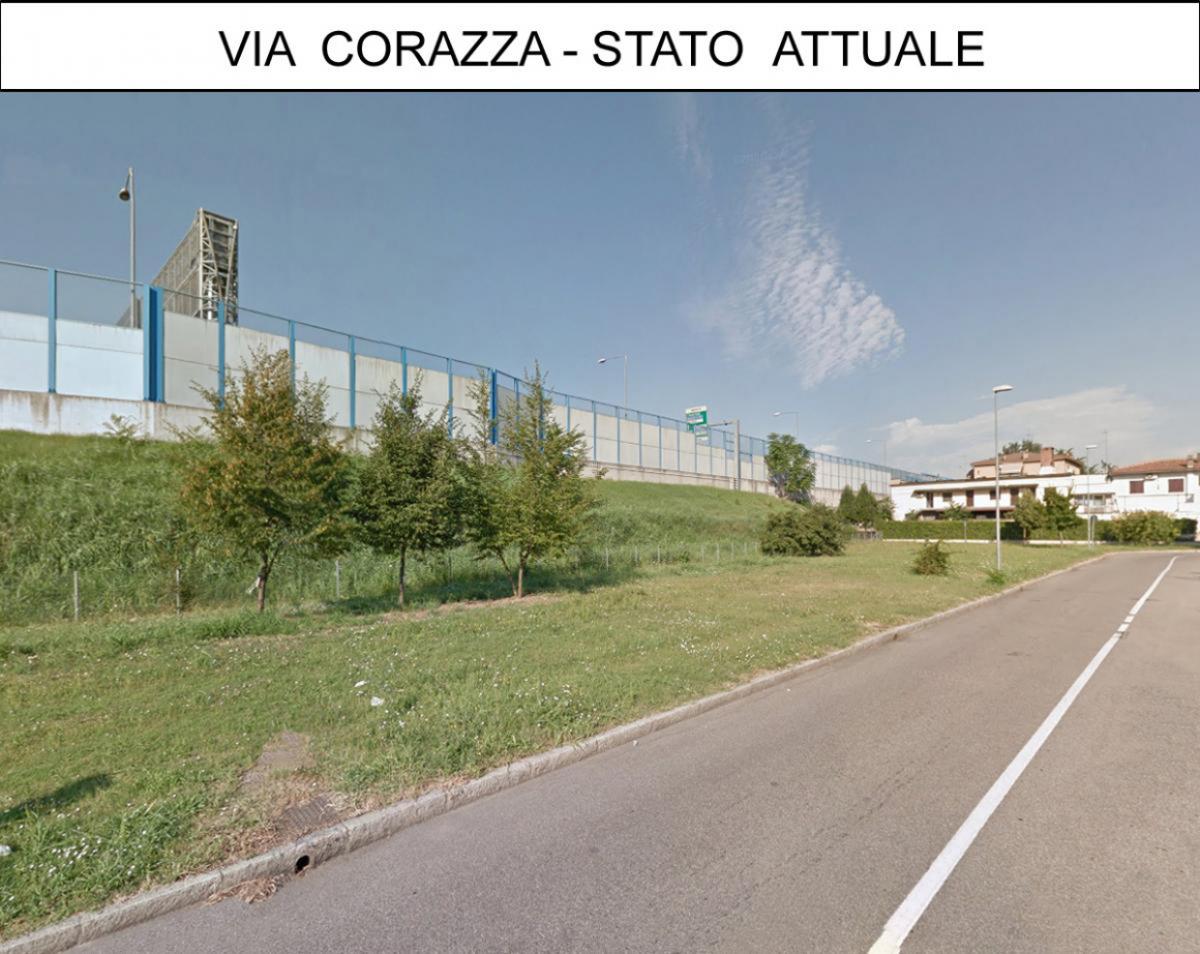
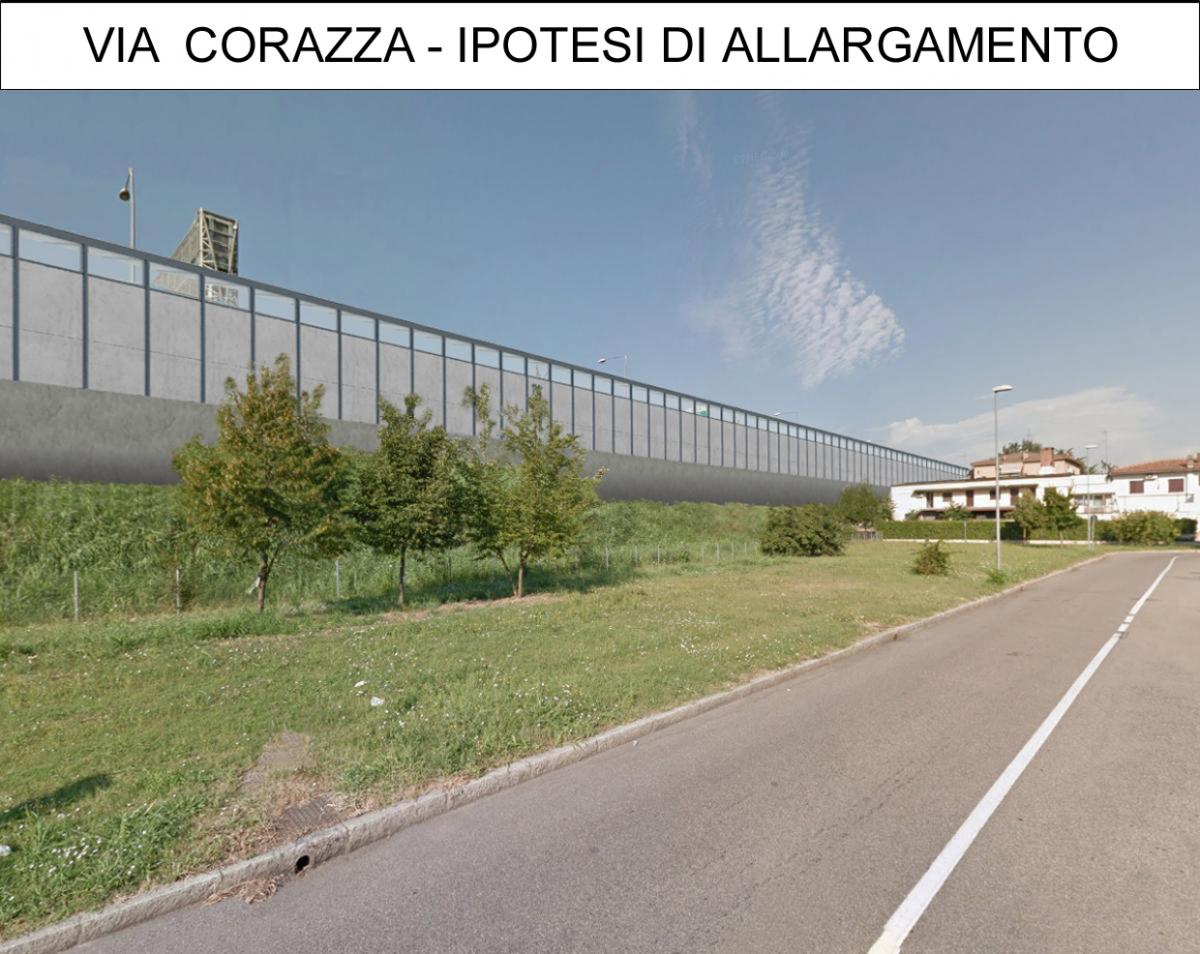
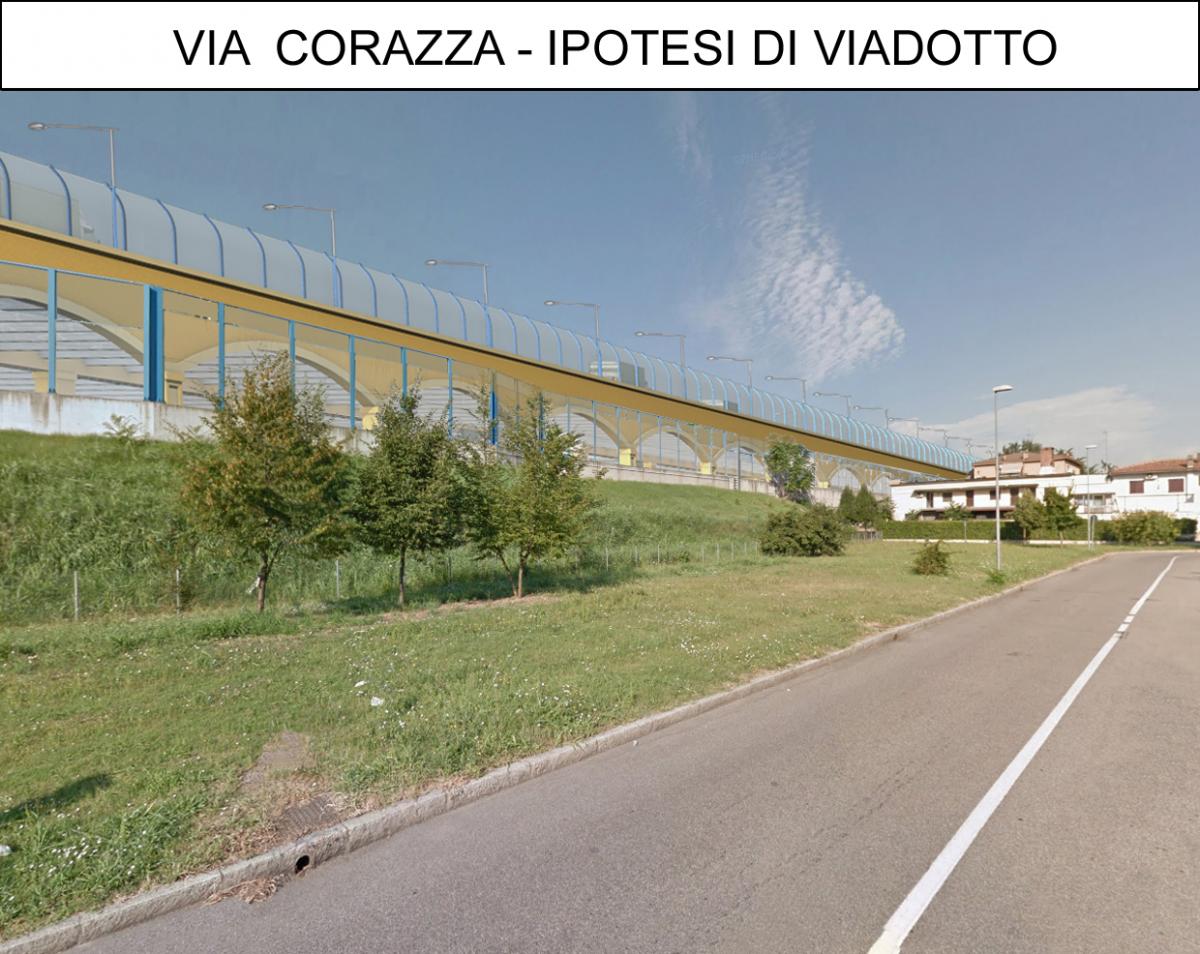
Similar work was done for the part of Zanardi street that runs along the ring road to Casalecchio.
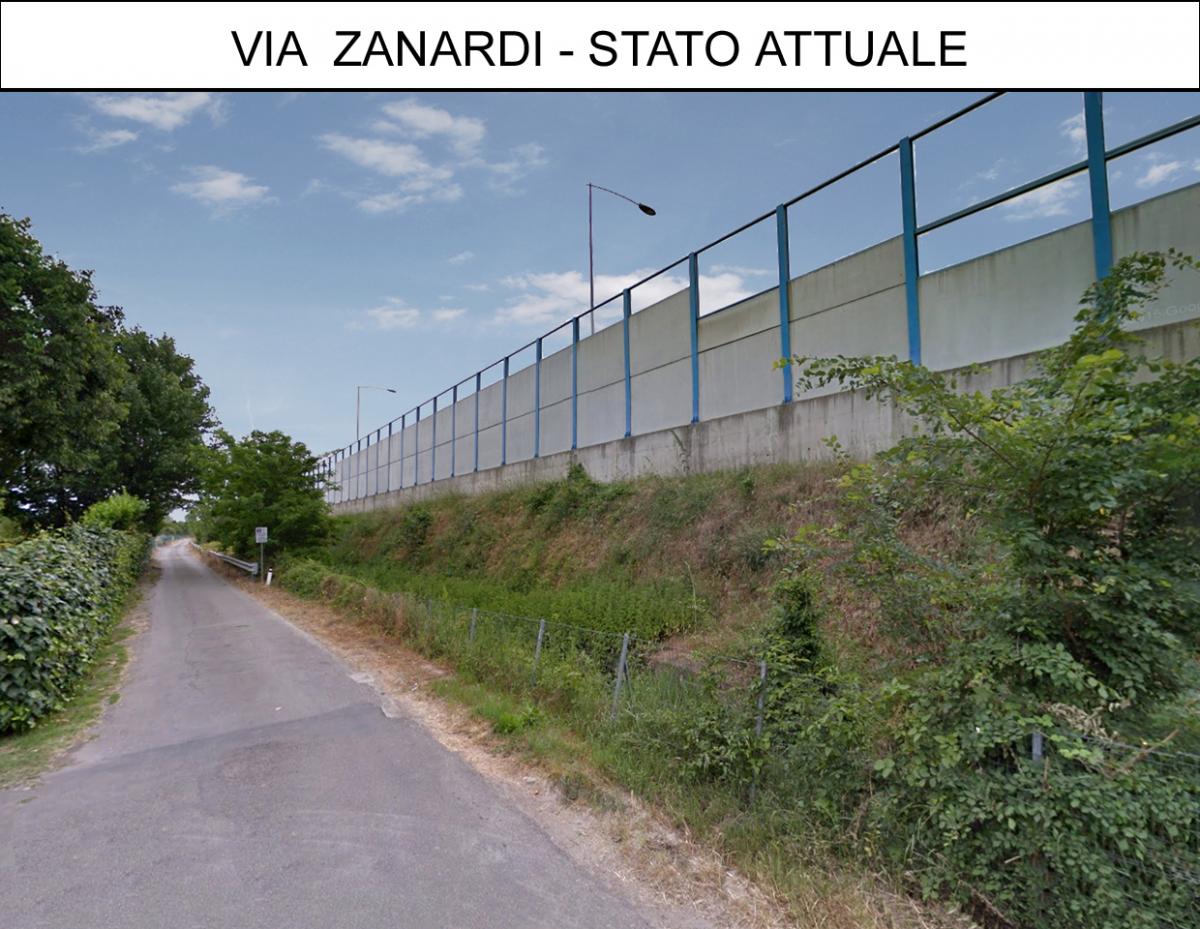
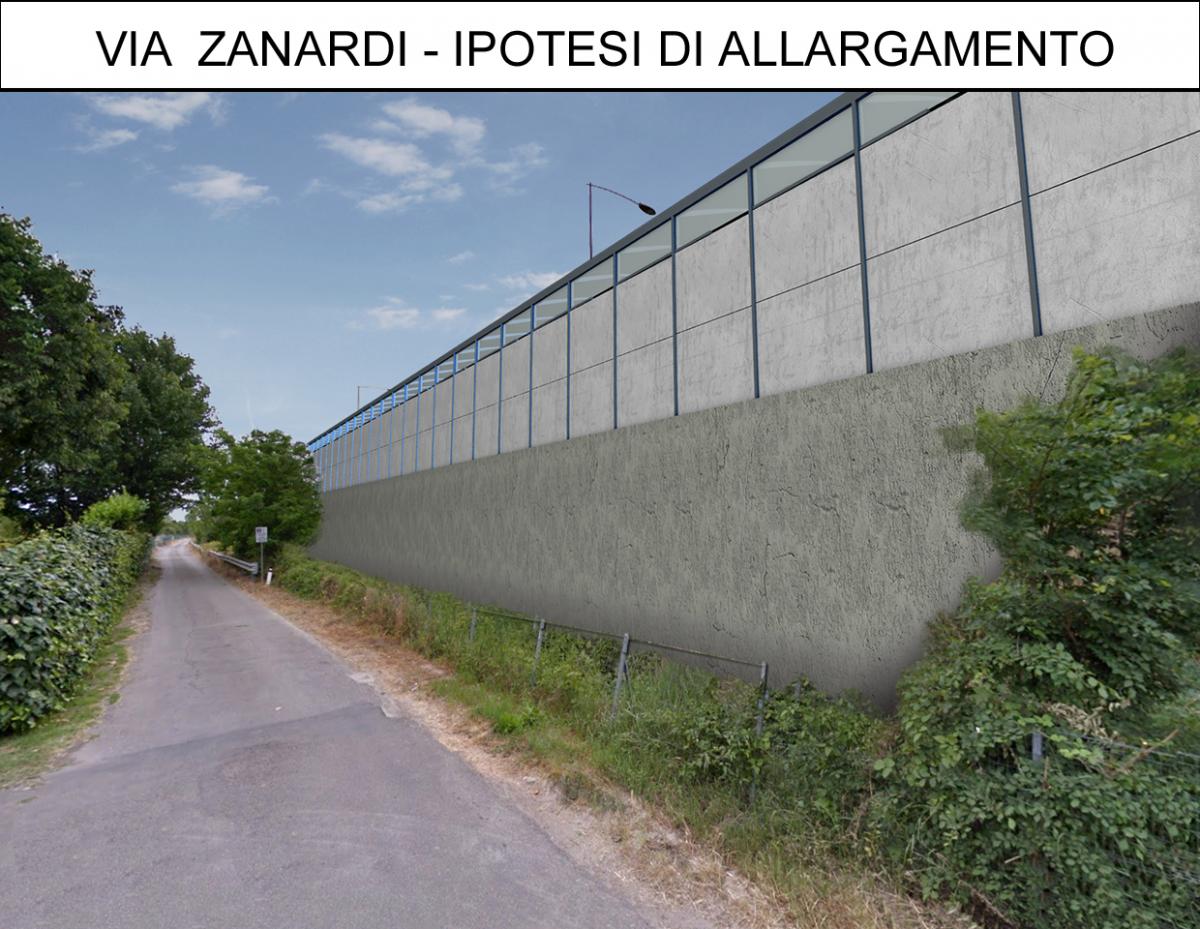
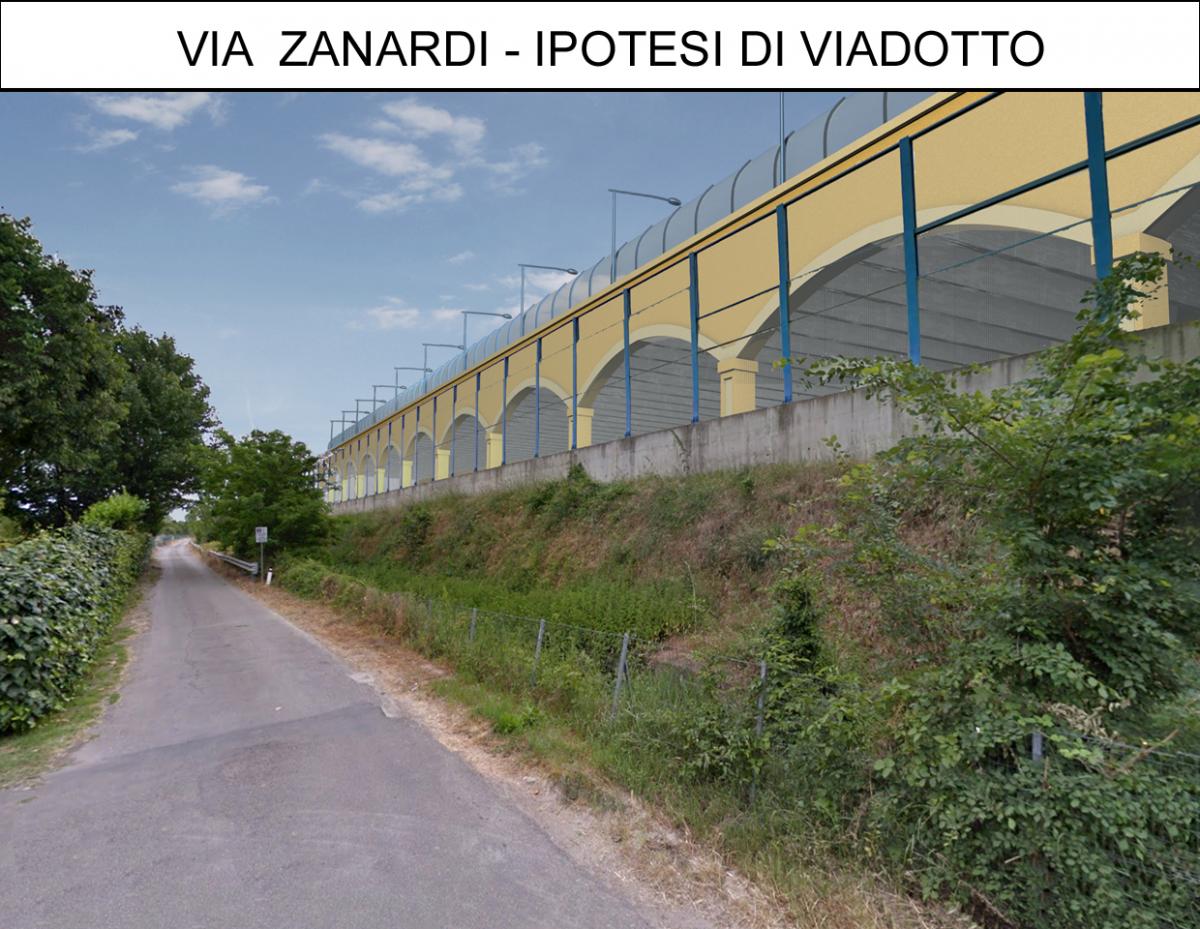
The work costs
The real "surprise" (and also one of the main strengths of the project to the viaduct) is represented by the cost of its development.
Obviously the costs should be compared with those for the north bypass which now implies a forecast of € 1.300.000.000 (one billion three hundred million euro).
From data published by the Province of Bologna in the "Report of costs for year 2004" the estimated costs for the North Bypass, with the project of 42 Km, appeared that the work as a whole would to cost 370 million euro. To this sum they must be added 95 million for additional works, 303 million for environmental mitigation works, 63 million for works of ordinary road and coplanar, totaling 461 million euro.
Additional 240 million were intended for in-depth analysis, general expenses, insurance expenses and security.
The amount totaled 1,073,305,000 euro.
The update costs in 2014 led to an allocation equal to 1,280,000,000 euro.
The unit costs of the work proposed here need to be exactly proportionated to those used for similar processes.
As already explained above the enormous advantages of the viaduct are represented by:
- reduction of the development of the path to less than 40%;
- elimination of expropriations and their consequences (no increase in costs due to compensation for expropriation);
- fixed costs at the beginning of the work (it is a building construction well quantified in advance).
Putting together the above and calculating the cost of the proposed project, is possible to complete it with a cost reduced to about 790 million Euros.
It assumes a cost of 35 million euro per kilometer, corresponding to the average cost calculated and published by the Authority for the Supervision of Public Works (Observatory of Public Works), by calculating unit costs per square meter of surface of the viaduct.
The necessary costs have been calculated, it is emphasized, based on the quantifications published about unit costs of the tracks on viaducts made.
To date, in June 2016, it was not officially reported the cost to upgrade the motorway and ring road (the so-called Passante di Mezzo).
The short report so far exhibited shows the many aspects of effectiveness, efficiency and
convenience of the project to the hyper-ring road viaduct, which, in the opinion of the designers, deserves special attention.
With this solution are avoided expropriations (and consequent bureaucratic and legal consequences), astronomical costs, unwelcome territorial invasions, damage to private and environment, heavy consequences of environmental impact and long approval times for the simplicity of the technical problems to be addressed.
Also the distances from buildings and private areas will be enhanced since the road area will be narrower than at present.
Concluding remarks to town planning project
The several thousand views reached in a few weeks by this site, both from Italy and from over 80 countries around the world, show the feeling that those who frequent the web have for matters that affect the future of all of us, adaptable to the context of a city like Bologna (which has kept intact all the characteristics of its medieval center) and to several other urban areas.
The duty of urban planners and public officials should be to consider, in the development of the city, every aspect useful and necessary to ensure the need now indispensable to mobility, but not forgetting the aspect of the environment and better living conditions, that can be obtained, by proposing safeguard of the heritage of the area's resources and history to which it belongs.
The reduction of smog and harmful CO2 production will certainly be achieved with the widespread use of electric traction but presumably in several years. In the meantime, the most obvious and simple methods of limiting to be taken are represented by avoiding queues of traffic where it is possible: this goal can be reached with the expansion of the road surfaces where mandatorily required.
The available technology also offers real opportunities to obtain significant reduction of pollutants.
The combination of rationalization of traffic flow and construction technology therefore allows undeniable improvements for the reduction of harmful gases and dust even compared to current conditions.
The loss of land, which is a finite size, has to be considered risk from which defend the community.
The health and welfare of the inhabitants of a city is to be considered a priority interest and the preservation of the distances of fast roads from houses have to be strictly respected.
Make one more road does not necessarily mean the automatic consumption of territory: it’s possible to use the areas already dedicated to this need proceeding to expansions in height, "dressing" the most important interventions depending on how the territory is prepared and organized from both town planning and architectural standpoint, taking care of the environmental consequences that should not worsen in any case.
A work of this kind should not even imply years of inconvenience and disruption of an already congested traffic to critical levels.
This is the philosophy that has guided the innovative project outlined above, both in design choice and in the foreseen operating modes, in the certainty of its simplicity, rationality and affordable feasibility.
An experience repeatable in many urban environments where other solutions would entail unnecessary sacrifices.
THE DESIGN GROUP
Urban and Architectural design:
Dr. Ing. Bruno Barattini
Dr. Ing. Stefano Morara
Structural Design:
Dr. Ing. Alessandro Uberti
Automation Systems:
Dr. Ing. Paolo Barbieri - Gruppo Logital
Legal Advice:
Avv. Marco Fina

